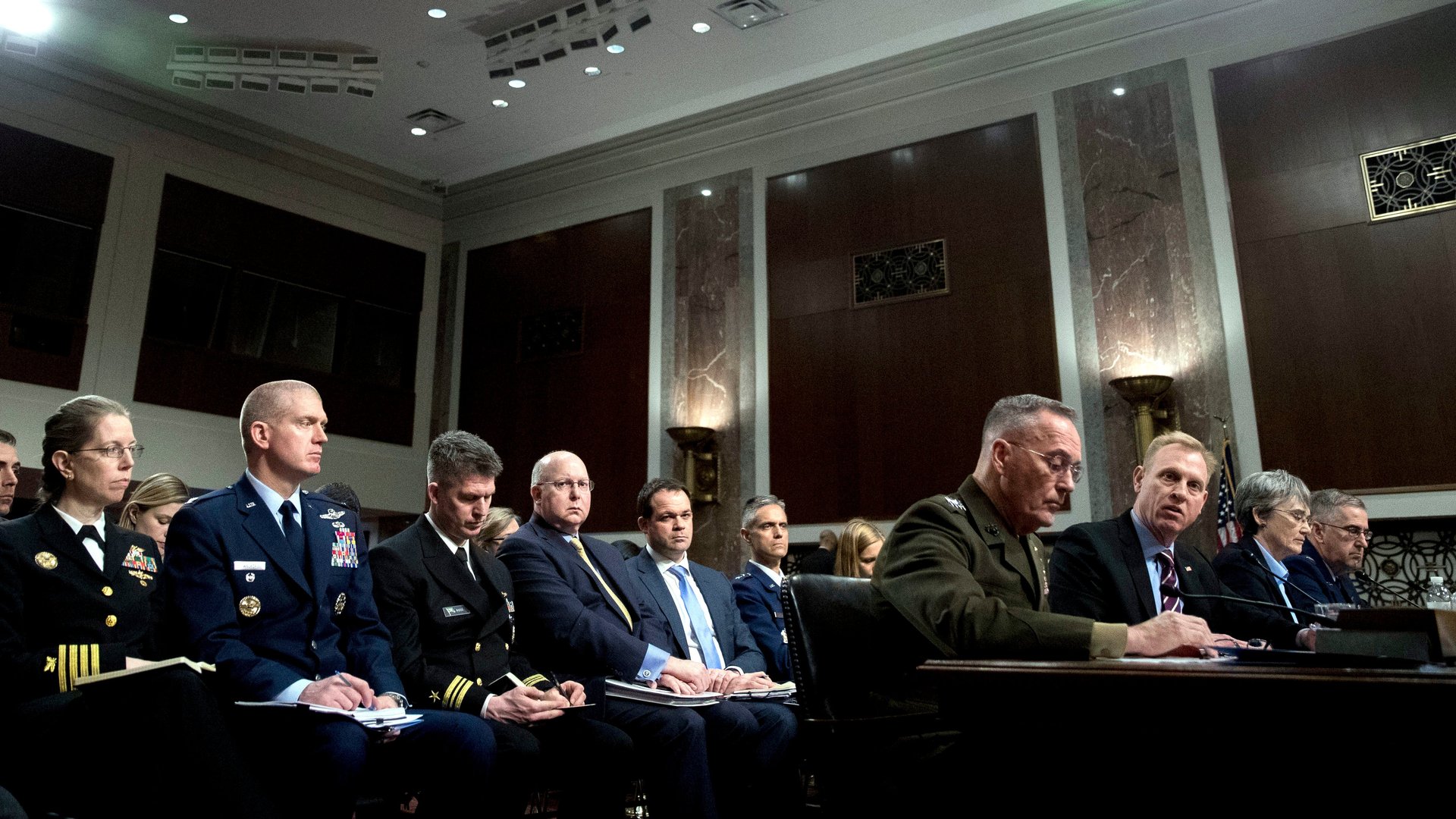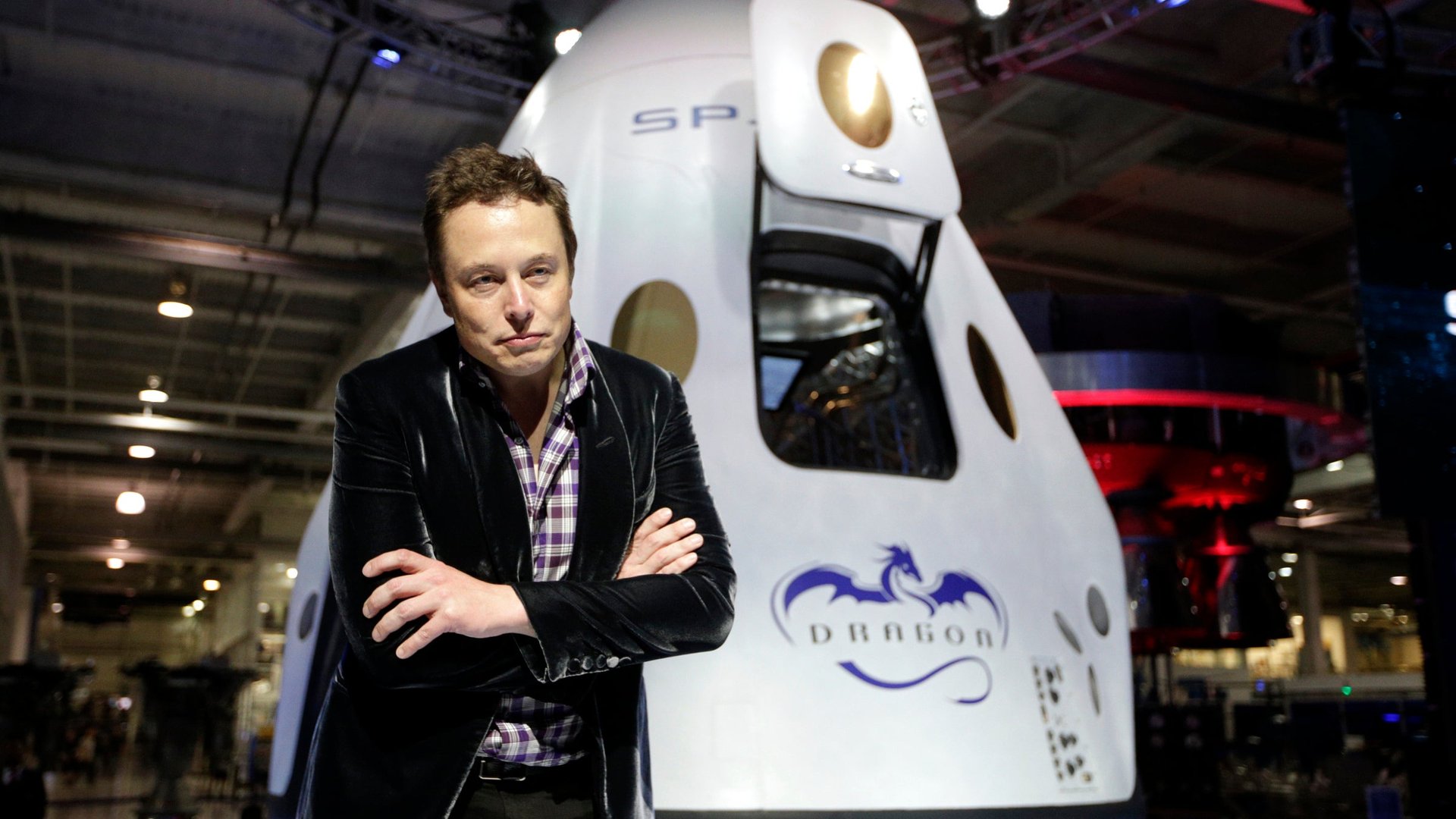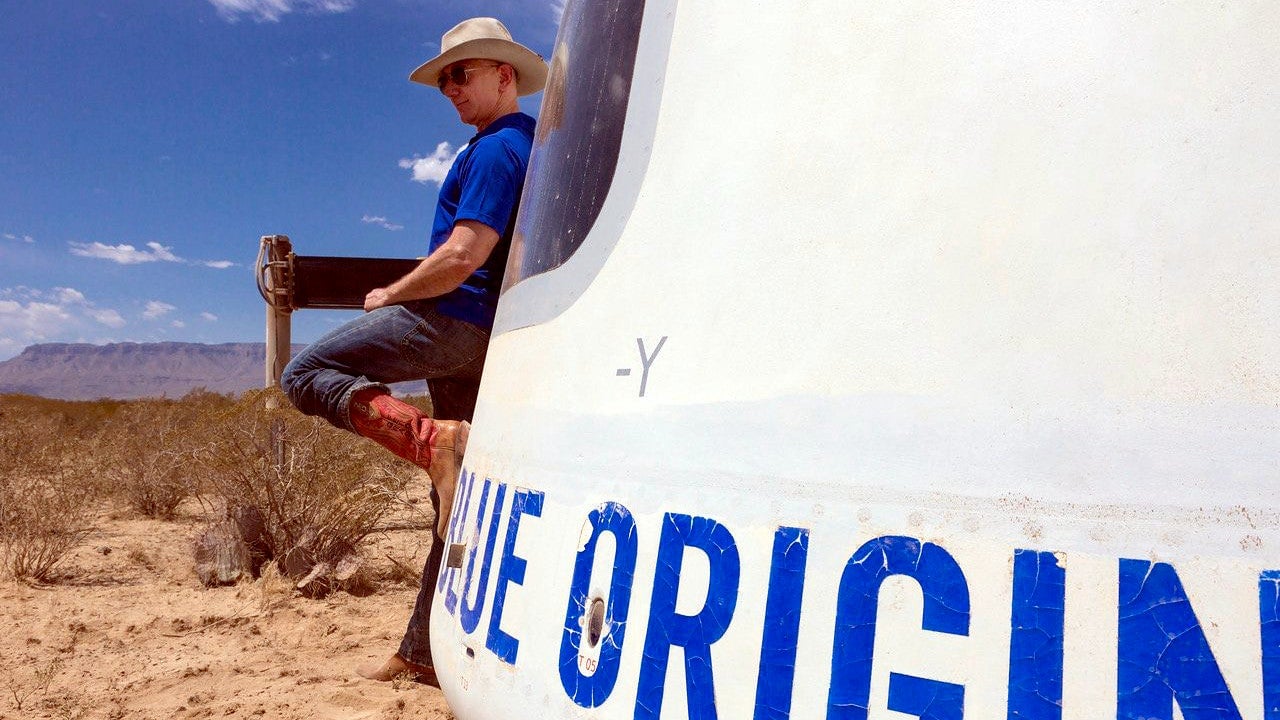Elon Musk and Jeff Bezos’ bids to build US military rockets could reshape national security
The US Air Force has, traditionally, done a terrible job of buying new rockets.


The US Air Force has, traditionally, done a terrible job of buying new rockets.
Now, as lawmakers consider a total reorganization of the US military’s space operations, the Pentagon’s latest attempt to purchase new launch vehicles has become a hotly contested rivalry featuring the military-industrial complex and rocket billionaires Elon Musk and Jeff Bezos. Of course, there’s a Russia angle, too.
The battle could shape not just US national security but also the future of private space companies writ large—access to revenue from military launches bolster a rocket-maker’s offerings to a range of potential customers. Musk’s SpaceX revolutionized the space industry and became the world’s leading commercial launcher thanks, in part, to winning Pentagon business.
SpaceX’s success forced its primary competitors—longtime military contractors like Boeing, Lockheed Martin, and Northrop Grumman—to compete on price and innovation for the first time in years. Add in Bezos’s company Blue Origin, with its own Silicon Valley-inflected approach to space, and the US boasts perhaps the deepest industrial base for space-launch in world history.
The Air Force will only choose two companies to fly five years’ worth of national-security missions, a prize of more than a billion dollars in annual revenue split 60-40 between the winning companies. The losing firms will be left to compete for civil or commercial launches without the support of the traditional third leg of the rocket-business stool.
The stakes had Blue Origin scrambling to convince the Air Force to change the way it is structuring the contracts, or at least delay the final choice. Despite political pressure, the Air Force has stood firm and will choose just two companies.
Perhaps the most conservative customers in the space world will be responsible for choosing the culture that will define American rockets for the next decade.
Can it do so without halting the last decade’s progress?
How not to buy a rocket
If you want to understand the current fight over Air Force space dollars, you need to look at some history.
In the 1990s, the Air Force began the Evolved Expendable Launch Vehicles (EELV) program to replace old rockets based on ballistic missiles. This year, it was renamed the National Security Space Launch program (NSSL), in part because some of its newer SpaceX vehicles are reusable, not expendable. In its early years, the new design process produced a string of failures. Over-optimistic assumptions by its two participants, Boeing and Lockheed Martin, almost pushed their rocket-building divisions to go out of business.
In 2006, the US military—desperate for access to space—overruled the Federal Trade Commission and allowed the two firms to join forces in a subsidized rocket monopoly called United Launch Alliance, which left the American space industry globally uncompetitive and stagnant.
By the end of 2014, the program that began as EELV had cost taxpayers $60.5 billion, more than twice the original estimate when it kicked off 16 years before. This is in part because space technology is expensive and difficult to design and, as auditors pointed out for years, the Air Force did not understand what it was paying ULA to do and did not manage the process.
Then Musk’s SpaceX and its Falcon 9 rocket arrived on the scene, with plans to explore the solar system and build reusable rockets. Musk, looking for more business, sued the Air Force for the right to compete against ULA, arguing its much cheaper rockets could put satellites into orbit just as well.
SpaceX benefitted from a geopolitical turn of events as well: ULA’s workhorse rocket, the Atlas V, is powered by Russian-built rocket engines as part of a post-Cold War policy to keep former Soviet engineers away from rogue states. After Putin’s invasion of Crimea, however, buying expensive engines from a Russian state-owned enterprise became politically damaging, through no fault of ULA.
The legal battles ended in a sealed settlement that allowed SpaceX to compete and win 10 launches; a rough comparison with ULA’s prices suggests the competition saved taxpayers more than $1 billion. Today, US military and spy agencies rely on SpaceX and ULA to fly surveillance, communication and navigation satellites seen as vital to projecting US power overseas. However, those contracts expire in 2022, and Congress has forbidden the Air Force from paying for any new Russian engines—which is to say, the Atlas V—after that year.
A new round of procurement
The military is preparing to purchase a new round of about 25 satellite launches between 2020 and 2024. It still wants to select just two providers when it makes the final cut, arguing that there is not enough business to support three American rocket companies.
This time there are four competitors: Bezos’ Blue Origin and the defense contractor Northrop Grumman have joined SpaceX and ULA in the race.
The Air Force started out by offering cash for the competitors to develop their rockets and launch systems before the final selection was made. In October 2018, Blue, Northrop and ULA split $2.3 billion of this funding to prepare next-generation designs. That includes ULA’s Vulcan rocket, Blue Origin’s New Glenn and Northrop’s OmegA.
SpaceX did not receive any of that development funding, with Musk later telling acting defense secretary Patrick Shanahan that his company’s proposal was poor and “missed the mark.” The company’s next rocket, Starship, is a huge vehicle designed for space exploration and isn’t expected to fly for several years.

SpaceX’s Falcon 9 and Falcon Heavy rockets—still the newest orbital rockets on the planet—are likely to be leading competitors in the final selection, if only because no competitor has a new rocket that will be ready to fly by 2022. That’s one reason Blue Origin pushed for a two-year delay: The Air Force will have to make decisions based on designs and plans, not operational vehicles.
Industry sources outside Blue Origin say the parameters of the contest were clear when bidding began. Blue, which originally hoped to fly its New Glenn rocket for the first time next year, is now expecting a 2021 debut. The company still has yet commit to a final design of the rocket and complete test programs on the two different engines that will propel it into space. Competitors also point out that the procurement request doesn’t prioritize factors like system readiness and schedule, which gives an advantage to companies who haven’t finished their rockets yet.
Others argue that the haste to make a choice is designed to favor the incumbents, ULA and SpaceX, and their existing vehicles. That concern is focused on a provision allowing the use of backup vehicles if the primary rocket isn’t ready, which could allow ULA to compete its unbuilt Vulcan rocket, then use an Atlas V to complete the mission. And the competitors are skeptical of language in the final procurement that allows the Air Force to select the second provider based on how it complements the first, a criteria they say is totally subjective.
Above all, the Air Force insists it cannot wait to fund a rocket program if it wants to have viable options by the time the Atlas V is retired in 2022. But given the lack of flight-ready new rockets, some observers expect the outcome will be purchasing the same rockets the US military uses today, at least for the early years of this procurement. That doesn’t necessarily match the Air Force’s stated goal of driving innovation in the rocket industry—and ending reliance on the Russian engines used by ULA.
An opaque decision process
Adam Smith, a Washington Democrat who chairs the House Armed Services Committee, wrote a letter to the Pentagon last month asking for the Air Force to delay the procurement decision until the service can get a look at the newest options and their prices. The result was a slightly altered contract. But the military is full speed ahead. “The industrial base is ready,” Air Force secretary Heather Wilson said in a statement.
The participating companies each spent more than a million dollars on lobbying in 2018. Smith, whose district includes operations for both Amazon and Blue Origin, certainly has an interest in his home-state company. It’s not unusual: ULA has its own powerful backers like senator Richard Shelby of Alabama, whose state hosts ULA’s largest factory. SpaceX found a champion in the late senator John McCain, whose anti-Russia stance led the Arizona Republican to take SpaceX’s side in the rocket-competition battle. Musk’s company now counts on California’s congressional delegation in the battle for launch contracts.
One political wrinkle for Blue Origin is that its business model has long been investment from the richest man in the world. During Blue’s first partnership with NASA in 2012, more than a decade after its founding, Blue employees told their contact at the space agency they had never sent anyone an invoice. Now, as the company seeks to make its space operations sustainable, the prospect of billions in revenue is worth fighting for.

Another is that ULA is almost entirely dependent on government business for its survival as a company; its rockets are just too expensive for commercial customers. Failing to win the contract would be disastrous for the company, which might endanger US access to space in the near-term. But selecting ULA and SpaceX, the two companies that have working rockets, would mean not just cutting off development funding to Blue Origin and Northrop Grumman, but making them return it.
The situation is even more complicated to assess because of the web of relationships between the three non-SpaceX competitors. Blue Origin is building the primary engines for ULA’s new Vulcan rocket, and Northrop Grumman will build the solid-rocket boosters expected to give it extra power. Those connections may influence how the Air Force picks its two launch providers.
Space Force, of course
Behind all of these machinations, lawmakers are debating how to split out extra-terrestrial military operations into the US Space Force. It’s not clear yet what the result will be, but one thing is sure: Managing this rocket-buying program will be one of its biggest and most expensive tasks.
And officials are worried about screwing up: The military has seen the growing gap, now going on eight years, between the end of NASA’s space shuttle in 2011 and the debut of a new vehicle that will carry astronauts into orbit. Military planners believe that any similar gap when it comes to launching satellites would be disastrous.
The same dynamics helped lead to the initial EELV debacle. The military’s willingness to pay any price led it to pay, well, any price. SpaceX introduced competition, but even now it is charging the government far more than commercial customers. That’s not just because the military requires additional services during launch. The government can’t get a better deal. One reason NASA and Air Force officials have been so bullish on Blue Origin is that its ambitions represent a competitive threat to SpaceX that ULA, so far, does not.
At the moment, anything from an immediate bidding process to a year-long delay is possible. Just as SpaceX’s protests led the Air Force to carve out a block of launches that could be bid out among rivals, the USAF could reluctantly create a new competition block. Few industry sources and legislative aides express much certainty about the final outcome, but they don’t expect that long-established ULA’s bid will be rejected. It’s also difficult for them to imagine the military rejecting SpaceX, which still offers the best value and newest working rockets.
That could leave Northrop and Blue Origin on the outside. Northrop, with a diversified defense business, might accept the result.
But if we have learned one thing about sidelining a deep-pocketed rocket entrepreneur, it’s that he might decide to sue.